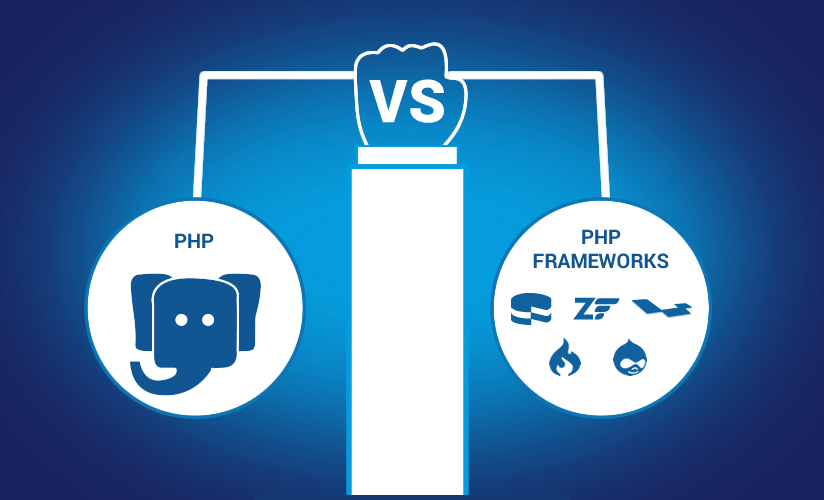Developing Cross-Platform Mobile Apps with React Native and Its Advantages

In the rapidly evolving world of mobile app development, the need to deliver seamless user experiences across different platforms is paramount. Building separate native apps for iOS and Android can be time-consuming, costly, and resource-intensive. Enter React Native, a powerful framework that offers a solution to this problem. In this blog, we will explore the concept of cross-platform mobile app development with React Native and the numerous advantages it brings to the table.
Introduction to React Native 
React Native is an open-source framework developed by Facebook that allows developers to build mobile applications using JavaScript and React, a popular JavaScript library for building user interfaces. React Native was first introduced in 2015 and has since gained significant popularity in the mobile app development community.
At its core, React Native enables developers to create truly native apps that run on both iOS and Android platforms, sharing a significant portion of codebase between the two. Instead of writing separate codebases for each platform, React Native enables developers to write a single set of code that works across both platforms, with platform-specific components where needed. This approach not only streamlines the development process but also improves code maintainability and reduces the overall time-to-market for the app.
Advantages of React Native for Cross-Platform Mobile App Development:
Now that we have a brief understanding of what React Native is, let’s delve into the advantages it brings to cross-platform mobile app development:
- Code Reusability and Cost-Effectiveness:One of the most significant advantages of React Native is code reusability. Since you can write a large part of the app’s logic in JavaScript and share it between platforms, it dramatically reduces development time and costs. This is a game-changer for businesses and developers who want to reach a broader audience without breaking the bank.
Traditionally, developing separate apps for iOS and Android required separate teams with different skill sets. With React Native, you can have a unified team of JavaScript developers, significantly reducing overhead costs and facilitating better collaboration among team members.Moreover, updates and bug fixes can be applied to both platforms simultaneously, ensuring consistency and efficiency in maintaining the app.
- Native Performance:One of the main concerns with cross-platform development frameworks has always been performance. Previous solutions often sacrificed performance for the sake of code sharing, resulting in sluggish and less responsive apps.
However, React Native takes a different approach. It uses a bridge that enables communication between JavaScript code and native components, allowing the app to leverage the full capabilities and performance of the device’s GPU and CPU. As a result, React Native apps offer near-native performance, providing users with a smooth and immersive experience.The bridge itself has also seen significant improvements over the years, leading to even better performance in newer versions of React Native.
- Hot Reloading and Fast Iteration:React Native’s hot reloading feature allows developers to see changes made to the code in real-time without the need to rebuild the entire app. This significantly speeds up the development process, enabling developers to experiment, iterate, and debug more efficiently.
With hot reloading, developers can instantly see the effects of their code changes, making the development cycle much more productive and fluid. It also reduces the wait time and boosts the team’s productivity, as they can quickly identify and fix issues during the development phase.
- Large and Active Community:React Native has a vast and active community of developers contributing to the framework. This community support makes it easier for developers to find solutions to problems, learn from others, and stay updated with the latest trends in the mobile app development space.
The active community also ensures that the framework evolves rapidly, introducing new features, fixing bugs, and addressing performance issues regularly. With such a vibrant community, developers can rely on React Native to stay relevant and competitive in the ever-changing world of mobile app development.
- Simplified User Interface:React Native’s declarative approach to building UI components simplifies the process of creating user interfaces. Developers can use pre-built components and design flexible layouts with ease, leading to more streamlined app development.
The framework provides a wide range of built-in components that closely resemble native elements, giving the app a native look and feel. Additionally, developers can customize these components or create their own reusable UI elements, leading to consistent branding and a smoother user experience across the app.This simplicity also enhances collaboration between designers and developers, as they can work together more seamlessly to create stunning and intuitive interfaces.
- Live Updates with Code Push:React Native allows you to push updates directly to users’ devices without going through the app store review process. With the Code Push feature, you can fix bugs, introduce new features, or update content without causing disruptions to users, thereby enhancing user engagement and satisfaction.
This feature is particularly valuable for businesses that need to react quickly to changing requirements or fix critical bugs without waiting for the app store approval process. It empowers developers to maintain better control over the app’s performance and user experience, leading to increased user retention and loyalty.
- Support for Third-Party Plugins:React Native supports a wide range of third-party plugins, allowing developers to integrate native device functionalities like camera access, GPS, push notifications, and more without having to write separate platform-specific code.
These plugins come in the form of reusable modules, making it easy for developers to access native features with just a few lines of JavaScript code. The vast selection of plugins available in the React Native ecosystem empowers developers to enhance their apps with various functionalities without starting from scratch or dealing with complex native implementations.
- Seamless Integration with Native Code: Although React Native allows you to share a considerable portion of the codebase, you can still include platform-specific code when necessary. This feature is particularly useful when working with custom or complex native modules, ensuring you have full control over the app’s behavior and appearance.
By integrating native code, developers can access platform-specific features that might not be available through existing third-party plugins. This flexibility ensures that developers can implement any functionality required to create a polished and feature-rich app.
Real-world Examples of Successful React Native Apps
Several renowned companies have successfully adopted React Native for their mobile apps, showcasing the framework’s capabilities:
- Facebook: Facebook’s mobile app was initially developed using native code but was later rewritten in React Native. This transition demonstrated React Native’s scalability and ability to handle large, complex applications. By adopting React Native, Facebook improved development efficiency and reduced the time and resources needed to maintain two separate codebases.
- Instagram: Instagram, owned by Facebook, adopted React Native for its mobile app development to enhance cross-platform performance while maintaining a native-like user experience. The framework allowed Instagram to achieve faster development cycles and deliver a consistent experience to users on both iOS and Android platforms.
- Walmart: Walmart implemented React Native in its app to improve development speed and reduce costs while delivering consistent user experiences across different platforms. With React Native, Walmart was able to optimize development resources, streamline app updates, and reach a broader audience efficiently.
- Bloomberg: Bloomberg’s mobile app embraced React Native to provide real-time financial information to users on both iOS and Android devices with excellent performance. The decision to use React Native enabled Bloomberg to deliver a highly responsive and feature-rich app that catered to the needs of their global user base.
Implementing Cross-Platform Mobile Apps with React Native:
React Native offers a straightforward and efficient approach to building cross-platform mobile applications. The process involves the following steps:
- Setting Up the Development Environment: Before diving into React Native app development, you need to set up the development environment. This includes installing Node.js, npm (Node Package Manager), and React Native CLI. Once the environment is set up, you can create a new React Native project using the command-line tools.
- Building the User Interface (UI): React Native’s declarative approach simplifies the process of building the user interface. You can use JSX (JavaScript XML) to define the UI components and their interactions. React Native provides a wide range of pre-built components, such as View, Text, Image, Button, and more, that closely resemble native elements. Additionally, you can use custom styles to design the layout and appearance of the app.
- Implementing Business Logic: The core business logic of the app is written in JavaScript. React Native allows you to use modern JavaScript features and libraries, making it easy to manage the app’s state, handle user interactions, and perform data fetching from APIs. Thanks to React’s component-based architecture, you can create reusable UI components, which improves code maintainability and reusability.
- Platform-Specific Code: Although React Native allows you to share a significant portion of code, there might be instances where you need to include platform-specific code. This is achieved using “Native Modules” or “Native Components.” Native Modules enable communication between JavaScript and native code, allowing you to access platform-specific features not covered by existing plugins.
- Testing and Debugging: React Native comes with useful developer tools that aid in testing and debugging. The framework supports tools like React Native Debugger, which allows you to inspect the app’s state, network requests, and performance. Additionally, React Native’s hot reloading feature mentioned earlier facilitates faster testing and debugging cycles.
- Deployment: Once the development and testing phases are complete, you can proceed with deploying the app to the app stores. For iOS, you’ll need to use Xcode to create an IPA (iOS App Store Package) file, while for Android, you’ll use Android Studio to generate an APK (Android Package) file. React Native provides clear documentation on the deployment process for both platforms.
Challenges and Considerations
While React Native offers many advantages for cross-platform development, it’s essential to be aware of some challenges and considerations:
- Performance Bottlenecks: Although React Native aims to provide near-native performance, certain highly intensive or specialized features may still require custom native code. It’s crucial to identify potential performance bottlenecks early on and address them appropriately.
- Limited Access to Platform-Specific Features: While React Native’s library of plugins and modules is extensive, there may be instances where specific platform features or third-party libraries aren’t readily available. In such cases, you might need to implement native code or find alternative solutions.
- Version Compatibility: As with any evolving technology, version compatibility between React Native and its various dependencies can sometimes cause issues. Staying up-to-date with the latest releases and maintaining a well-documented codebase can mitigate such problems.
- Learning Curve for JavaScript Developers: While React Native allows JavaScript developers to build mobile apps without needing to learn platform-specific languages (Swift/Objective-C for iOS, Java/Kotlin for Android), there might still be a learning curve for those unfamiliar with the React ecosystem and mobile development principles.
- Device Fragmentation: As with any cross-platform solution, device fragmentation can be a concern. The vast array of Android devices and OS versions may result in slight variations in the app’s appearance and behavior across different devices.
How can Imenso Software Can Help You in Developing Cross-Platform Mobile Apps with React NativeImenso Software is a leading software development company that specializes in developing cross-platform mobile apps with React Native. Leveraging their expertise and experience, Imenso Software can provide comprehensive services to help you build high-quality, feature-rich, and scalable mobile applications that run smoothly on both iOS and Android platforms. Here’s how Imenso Software can assist you in developing cross-platform mobile apps with React Native:
- Experienced React Native Developers: Imenso Software has a team of highly skilled and experienced React Native developers who are well-versed in creating cross-platform mobile applications. Their expertise in JavaScript, React, and React Native ensures that they can efficiently develop robust and efficient apps while adhering to best practices and industry standards.
- Full-cycle App Development: Imenso Software offers end-to-end app development services, covering the entire app development lifecycle. From ideation and planning to design, development, testing, and deployment, they can handle every aspect of the project to deliver a fully functional and market-ready app.
- UI/UX Design: A well-designed user interface (UI) and a seamless user experience (UX) are crucial for the success of any mobile app. Imenso Software’s UI/UX designers can create visually appealing and intuitive interfaces that enhance user engagement and satisfaction. They ensure that the app’s design aligns with your brand identity and meets the expectations of your target audience.
- Custom Solutions: Every app has unique requirements and features. Imenso Software understands this and offers tailor-made solutions that cater to your specific business needs. Whether it’s integrating custom functionalities or implementing platform-specific features, they can provide custom solutions to achieve your app’s objectives.
- Code Optimization and Performance Enhancement: To ensure that the app performs optimally, Imenso Software pays close attention to code optimization and performance enhancement. They implement best practices to reduce load times, enhance app responsiveness, and minimize memory usage, resulting in a smooth and seamless user experience.
- Quality Assurance and Testing: Imenso Software employs rigorous quality assurance and testing methodologies to identify and rectify any issues in the app. They conduct thorough testing on different devices and platforms to ensure the app functions flawlessly and is free from bugs or errors.
- Maintenance and Support: The journey doesn’t end with app deployment. Imenso Software provides ongoing maintenance and support services to keep your app up-to-date, secure, and running smoothly. They address any issues that arise post-launch and offer timely updates to adapt to evolving technologies and market demands.
- Transparent Communication: Throughout the development process, Imenso Software maintains transparent communication with clients. They provide regular updates, milestones, and progress reports, keeping you informed about the status of the project and enabling you to provide feedback and suggestions.
- Cost-Effective Solutions: Imenso Software offers cost-effective solutions that do not compromise on quality. Their efficient development process and skilled team enable them to deliver high-quality apps within budget and on time.
Conclusion:
React Native has proven to be a game-changing framework for developing cross-platform mobile applications. Its advantages, including code reusability, native performance, hot reloading, and an active community, make it an excellent choice for businesses and developers seeking to streamline their app development process.
By leveraging React Native, companies can build high-quality apps for both iOS and Android, reaching a broader audience while optimizing development costs and time-to-market. The framework’s ability to deliver near-native performance and its flexibility in combining JavaScript with native code makes it an appealing choice for building feature-rich and user-friendly apps.
However, as with any technology, it’s essential to be aware of potential challenges and considerations to make the most of React Native’s capabilities. Understanding the platform’s strengths and limitations will help developers make informed decisions during the development process.
Overall, React Native’s continued growth and evolution, combined with its advantages for cross-platform development, ensure that it will remain a prominent player in the mobile app development landscape for years to come. Embrace the power of React Native and unlock new possibilities in mobile app development!
React Native at its core. Embrace the power of React Native and unlock new possibilities in mobile app development!
Similar Posts

Core PHP vs PHP Frameworks
PHP has been a cornerstone of web development for a long time. The LAMP stack (Linux, Apache, MySQL, and PHP) is still a frequently used part of web development, and it is something that people tend to learn in computing courses in college. Today, there are many other frameworks that web applications can be built […]...

How to Choose the Best Web Application Development Company?
If you ask a business owner or startup founder how their first web development project or website development experience was, it’s very likely that you’ll get an irritated expression. ...

From Data Breaches to Ransomware: Cybersecurity in the Age of Software Development
In today’s digital age, software development is more integral to our lives than ever before. From mobile apps to web platforms and even the Internet of Things (IoT), software powers the world around us. However, as offshore software development continues to evolve, so do the threats it faces. Cybersecurity is of paramount importance in this […]...






